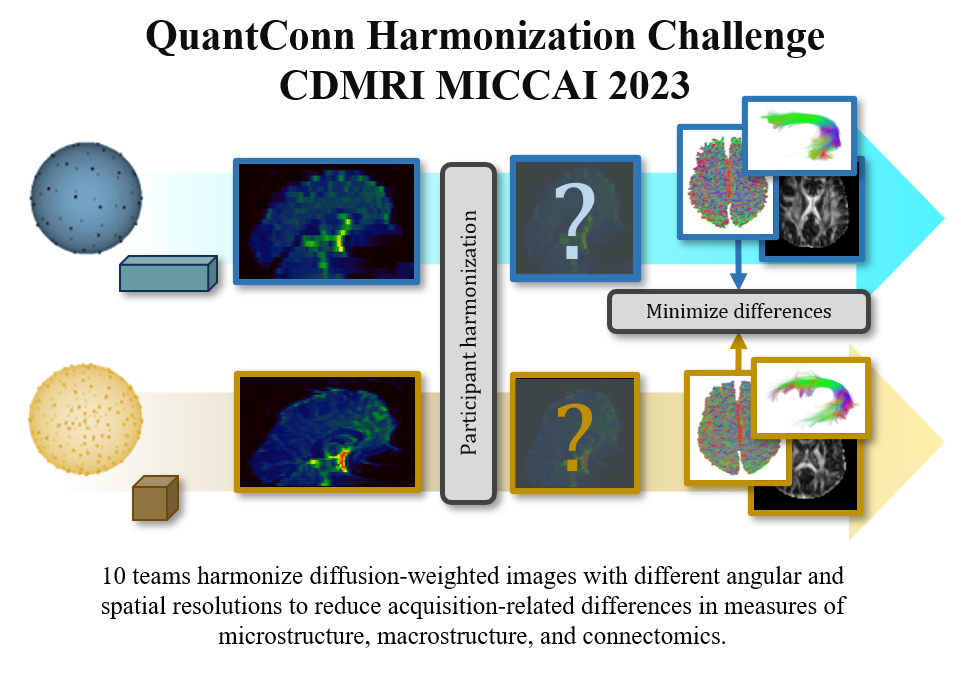MICCAI-CDMRI 2023 QuantConn Challenge Findings on Achieving Robust Quantitative Connectivity through Harmonized Preprocessing of Diffusion MRI
Newlin, N. R., Schilling, K., Koudoro, S., Chandio, B. Q., Kanakaraj, P., Moyer, D., Kelly, C. E., Genc, S., Chen, J., Yang, J. Y.-M., Wu, Y., He, Y., Zhang, J., Zeng, Q., Zhang, F., Adluru, N., Nath, V., Pathak, S., Schneider, W., … Landman, B. A. (2024). MICCAI-CDMRI 2023 QuantConn Challenge Findings on Achieving Robust Quantitative Connectivity through Harmonized Preprocessing of Diffusion MRI. Machine Learning for Biomedical Imaging, 2(August 2024), 1083–2005. https://doi.org/10.59275/J.MELBA.2024-9C68

White matter alterations are increasingly implicated in neurological diseases and their progression. International-scale studies use diffusion-weighted magnetic resonance imaging (DW-MRI) to qualitatively identify changes in white matter microstructure and connectivity. Yet, quantitative analysis of DW-MRI data is hindered by inconsistencies stemming from varying acquisition protocols. Specifically, there is a pressing need to harmonize the preprocessing of DW-MRI datasets to ensure the derivation of robust quantitative diffusion metrics across acquisitions. In the MICCAI-CDMRI 2023 QuantConn challenge, participants were provided raw data from the same individuals collected on the same scanner but with two different acquisitions and tasked with preprocessing the DW-MRI to minimize acquisition differences while retaining biological variation. Harmonized submissions are evaluated on the reproducibility and comparability of cross-acquisition bundlewise microstructure measures, bundle shape features, and connectomics. The key innovations of the QuantConn challenge are that (1) we assess bundles and tractography in the context of harmonization for the first time, (2) we assess connectomics in the context of harmonization for the first time, and (3) we have 10x additional subjects over prior harmonization challenge, MUSHAC and 100x over SuperMUDI. We find that bundle surface area, fractional anisotropy, connectome assortativity, betweenness centrality, edge count, modularity, nodal strength, and participation coefficient measures are most biased by acquisition and that machine learning voxel-wise correction, RISH mapping, and NeSH methods effectively reduce these biases. In addition, microstructure measures AD, MD, RD, bundle length, connectome density, efficiency, and path length are least biased by these acquisition differences. A machine learning approach that learned voxelwise cross-acquisition relationships was the most effective at harmonizing connectomic, microstructure, and macrostructure features, but requires the same subject be scanned at each site co-registered. NeSH, a spatial and angular resampling method, was also effective and has generalizable framework not reliant co-registration. Our code is available at https://github.com/nancynewlin-masi/QuantConn/